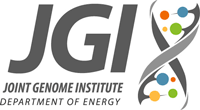|
|
Neurospora crassa, a model system for filamentous fungi, can be found as a pioneer organism on burnt tree trunks after forest fires, for example, and can use lignocellulosic biomass well as a sole substrate. Filamentous fungi are of particular interest for bioenergy research, as they can help to better understand degradation processes of plant material, which is of enormous importance for the production of 2nd generation biofuels. Using a systeomics approach, this project exploits the genetic resources of N. crassa to build a high-resolution model of gene regulation at the whole-genome level and predict how microorganisms can be engineered for industrial purposes. The goal is to be able to represent the regulation of nutritional processes in a way that allows us to describe the function of newly discovered regulatory factors and to find co-regulated genes involved in biomass conversion. It is expected that the project will also help to improve the genome annotation of N. crassa as well as other fungi already sequenced and in the process of being sequenced, such as those that are part of the Joint Genome Institute's "1000 Fungal Genomes" project.
|
|
Duration
|
2013 - 2016
|
|
Editing
|
N. Louise Glass (UC Berkeley), Jay Dunlap (Dartmouth Medical School), Eric Selker (U Oregon), Deborah Bell-Pedersen (Texas A&M), Michael Freitag (Oregon State), Matt Sachs (Texas A&M), John Taylor (UC Berkeley), Monika Schmoll (Austrian Inst. of Technology), Scott Baker (EMSL), J. Philipp Benz (TUM), Rachel Brem (UC Berkeley), Daniel K. Nomura (UC Berkeley), Igor Grigoriev (JGI), Nathan Price (Inst. of Systems Biology
|
|
Website
|
JGI
|
|
Funding
|
U.S. Department of Energy Joint Genome Institute (DOE JGI).
|
|
|

|
|
Funding volume
|
This is a community sequencing project.
|
|
|
|
|
|
|
|
|
|
|
|
|
